Long blocked off by 1960s architecture and difficult to get to, the medieval ruins of St Alphege church have been revealed at last.
The ruined church was a victim of post-war planning, to build wide roads and move pedestrians away from the streets, but in doing do, the new roads and highwalks isolated the ruined church from public access.
Now, it’s being revealed to the public once more.
The church of St Alphage London Wall has had what can be politely described as a rather checkered history, and the ruins are what remains of what was originally a Priory Church for a nearby nunnery, found probably around the year 1000.
The church was repaired a number of times, most notably in 1774-7, when most of the church was rebuilt, retaining the medieval tower.
By the 20th century it was in a poor state and part was rebuilt in 1913, but then damaged in an early WW1 air raid. Rebuilt in 1919, it was closed just the very next year, and the nave demolished in 1923.
The tower remained, and was used for services until WW2, when much of the area was damaged by bombing. While the bombing revealed the existence of the Roman wall behind, which had been hidden under later buildings, it also killed off what little remained of the church.
All that was left now was the tower, and not much of that.
The remains of the church were designated a Grade II listed structure in January 1950. The surviving remnants of these consist of the ruin of a central tower, built of flint and rubble masonry, with arches on three sides; the south wall is missing
In the 1950s, the massive London Wall road was constructed, as part of a fortunately cancelled ring-road around the City, and the pedestrians were elevated skywards onto the famous highwalk. A utopian idea that sadly never quite worked, it also cut the remains of St Alphege church cut off. Although it was technically possible to get to the street level and see it, in reality, most people would have only ever seen the top of the ruins by peering down from the concrete highwalk that now surrounded it.
What’s happened in recent years is that the post-war buildings have been swept away for modern offices, and the pavement at street level made accessible again.
The highwalk remains, in part, and the massive concrete space has been replaced with a series of more delicate elevated bridges, clad in weathering steel (corten), which to my mind looks lovely, and the rusted brown offsets the stones of the old church wonderfully.
The ruins themselves have been cleaned up, new paving installed and in the sunken arena, a series of blocks for local office workers to sit on, pondering fate as they munch on sandwiches.
The space is still being worked on at the time of writing, with the roman wall garden behind waiting to be finished and a heritage plaque waiting to be installed outside the church.
The old staircase inside the tower is sealed off, which is understandable, if a bit of a pity.
Overall, it has the air of a medieval space sharply contrasting with the modern stone and steel around it, and while that can sometimes look awful, this time they’ve done a decent job of it.
The addition of maintained gardens around the site help to soften the effect, which is especially needed due to its proximity to the main road.
There is also a number of uplighters dotted around, so the space should look delightful at night when they are working. That should turn the old church and neighbouring garden into a local landmark where before it was an overlooked (literally) by pedestrians and ignored by busy motorists.

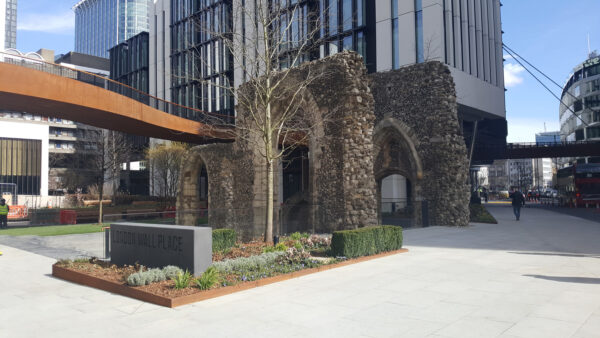
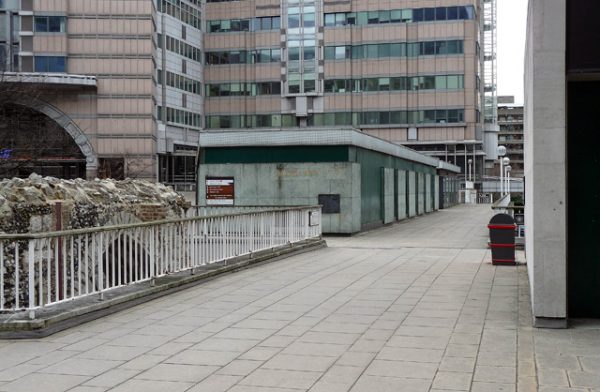
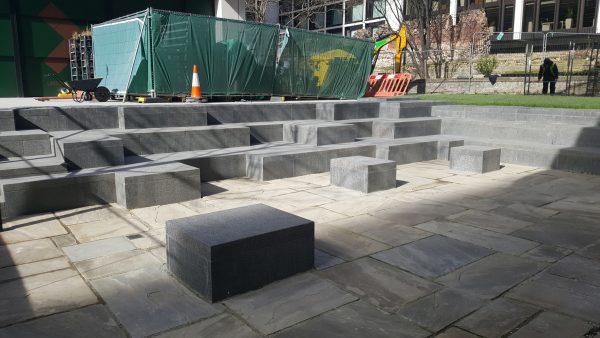
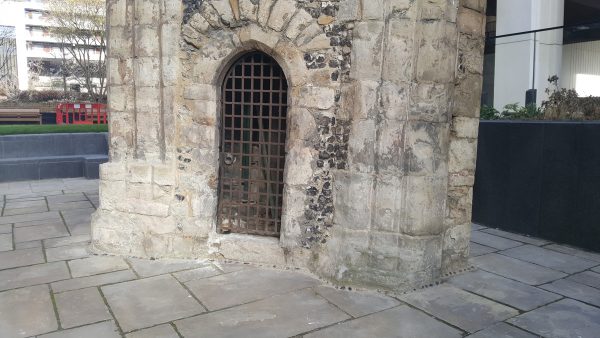
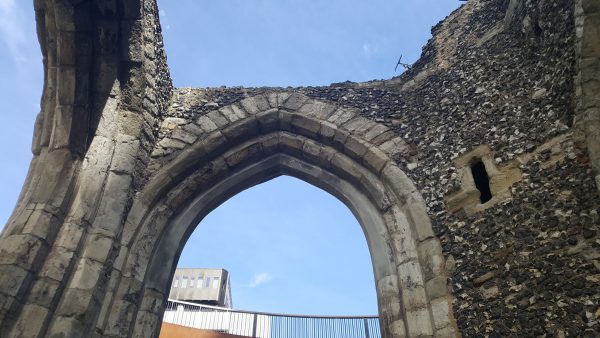
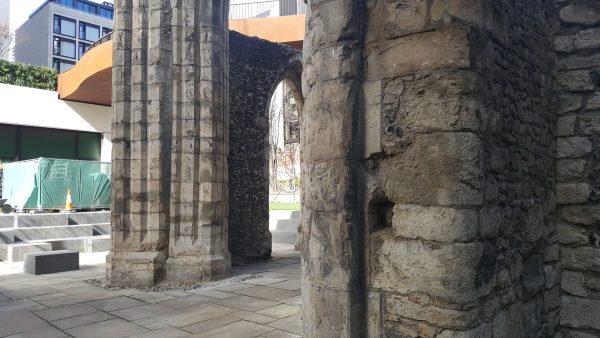
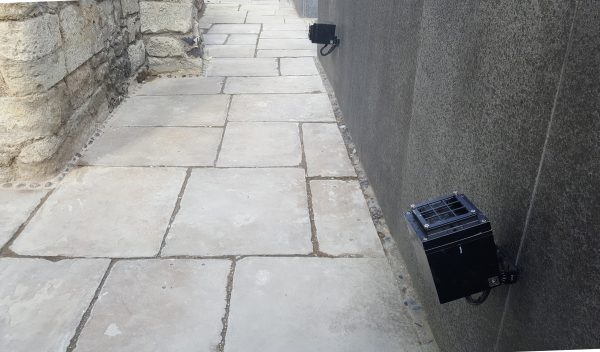






Alphaege is a Norman French misspelling of Elphick.
I remember coming across this in 2010 and being amazed. Especially that it was just tucked in by the side of a major road, neglected and ignored, with no signage to identify it. It was one of the oldest buildings I’d seen at that time though I never knew the history of it until now. I loved the mysterious, overgrown wilderness of it then; a time capsule catapulted into modern London. It looks a bit sanitised now, but I’m glad it’s been cared for and preserved, in situ, and given better surroundings.